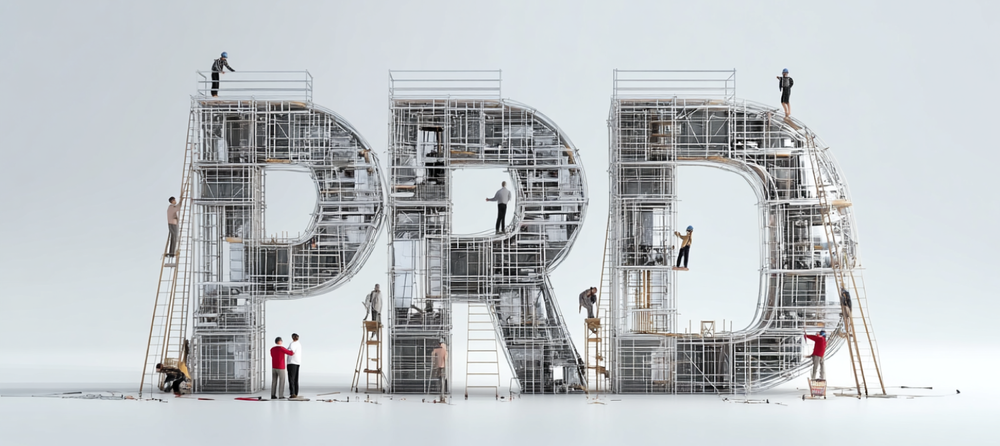The rise of AI has reshaped how organisations operate - and what leadership now requires. As intelligent automation and cloud platforms redefine the way of work, leadership is no longer about control or stability. It’s about building learning organisations where people, processes and performance evolve together through intelligent platforms.
Leading with coherence in the AI era
AI is becoming a new constant topic in daily operations and on the management's agendas. Teams now work across digital environments where automation drives decisions and pace. Leadership, therefore, is about keeping everything connected - ensuring strategy, execution and culture move together even when circumstances shift. We are entering a fundamentally different shift, leaving the post-industrial age behind, and enters the era of AI.

Leaders and leadership teams need to actively address the age of AI in their meeting agendas to build resonance and direction. These discussions create awareness, build confidence, and strengthen both individual engagement and team dynamics. Without these exercises, it becomes difficult to maintain alignment and coherence across the organisation.
To make this happen, leaders need to:
- Build AI literacy across teams to adopt it effectively
- Create a shared mindset so everyone works toward the same goals
- Foster psychological safety so people can test, learn, and improve without fear
- Establish regular collaboration routines to maintain alignment
Modern leaders design organisations that can learn and adapt faster than the market - combining vision, mission, and shared purpose. To stay relevant, the why and the where must be communicated clearly and consistently throughout the organisation.
Cloud platforms as a pre-stage and stabiliser for scaled AI
Modern cloud platforms have made powerful AI tools accessible to organisations for years already - secure, scalable and integrated into daily work. They connect data, systems, and automation into one shared environment, helping businesses move faster and make smarter decisions.

Cloud platforms enable organisations to:
- Scale AI pilots into full production with less complexity
- Combine data, workflows and automation into unified systems
- Maintain security and compliance while innovating faster
- Support collaboration across distributed teams and markets
- Access the latest AI updates automatically through platform release cycles
For most organisations, technology is not the obstacle - user adoption is. The real challenge lies in helping people use these capabilities with clarity, accountability, and intent.
13.5% of EU enterprises use at least one AI technology
74% of companies have started AI projects, 14% reached production
56% of EU companies have not yet scaled a major AI investment
39% lack internal frameworks to support adoption
95% of IT leaders cite integration as a key barrier
Key insight: Technology is ready - people and processes are the real adoption challenge.

From adoption to integration - extending your AI ecosystem
Modern AI platforms no longer operate as isolated systems. They grow through their ecosystem of partners, where each service focuses on its core strengths while partners contribute complementary capabilities. This “platform innovation boosting model” amplifies development speed and creativity by distributing innovation across an open network of collaborators.
For leaders, this means AI success depends less on owning every tool and more on harnessing the surrounding ecosystem. Leading platforms like OpenAI, Salesforce, and Microsoft have built ecosystems that thrive on partner integrations, APIs and modular extensions. Using integration tools such as n8n, Make.com, and Zapier, organisations can now connect systems effortlessly — turning fragmented processes into unified, intelligent workflows.
When extending your business platform using AI, you should consider applying these three guiding principles:
- Best-of-breed: Select proven, mature platforms that can scale reliably and attract a strong partner ecosystem.
- Best-fit: Ensure each solution integrates smoothly with your existing tech stack, workflows, and data architecture.
- Best-practice: Follow established implementation frameworks and success cases to maintain stability, compliance, and measurable outcomes.
Cloud and AI platforms have made innovation more accessible than ever, but their real potential lies in how well leaders enable collaboration across their ecosystems. The goal is not to collect tools but to design an interconnected network where people, data, and systems continuously enrich each other — driving scalable, sustainable innovation.
Security, Ethics and Compliance in the AI Era
As AI becomes embedded in operations, leaders must take responsibility for how technology is used - not just what it delivers. Security-by-design, ethical awareness and compliance are now central to leadership, not just IT or legal functions.

European frameworks such as the AI Act, GDPR, NIS2 Directive and Data Governance Act set clear expectations for transparency, accountability and human oversight. Leaders must understand how these regulations shape decision-making, data use and organisational design.
- Security-by-design: Build protection, privacy, and risk management into every system from the start.
- Ethical leadership: Use automation to enhance trust and fairness - not replace human judgment.
Embedding these principles early reduces risk and strengthens credibility. Compliance and ethics become strategic advantages that build trust with employees, customers, and partners. HR should play an active role in securing the skills and awareness needed for responsible AI in use.
Why it matters
AI will not replace leaders - but it will redefine leadership. As intelligent systems take on more decisions, leaders must learn to combine human insight with machine intelligence. The ability to guide people through uncertainty, interpret complexity and create meaning is now a defining skill for adaptive leadership.
Leadership is no longer about hierarchy or position - it’s about alignment, learning and shared accountability. The organisations that succeed will be those in which teams think, act, and adapt together with clarity and purpose.
My related services
If you’ve read this far, you already recognise that leadership in the AI era requires new skills and structures. Through Team and Leadership Coaching, I guide organisations build clarity, accountability and adaptability in ongoing transformation using AI and platform to achive operational effeciency.
My work supports leadership teams in creating systems that stay aligned and resilient as technology evolves.
If your organisation is preparing for an AI-driven future, explore my Team and Leadership Coaching service to learn how I help leaders and teams turn strategy into measurable, lasting progress.








